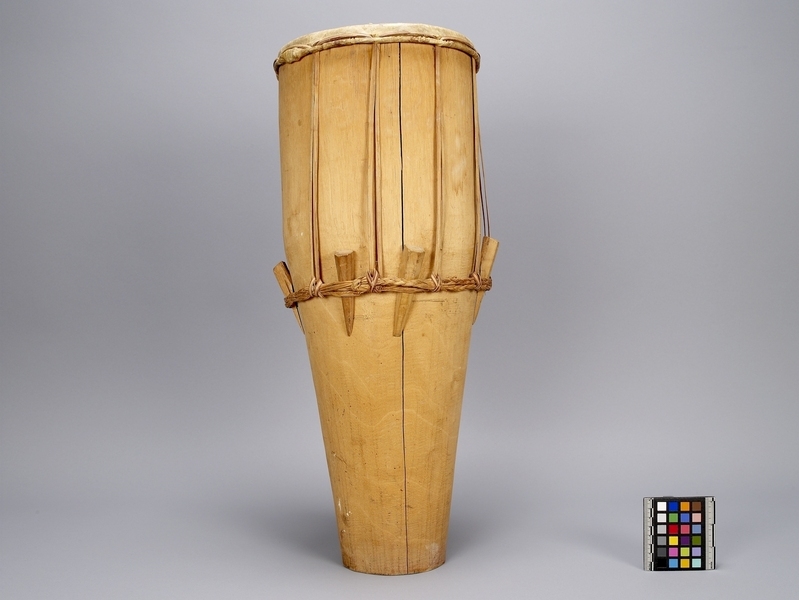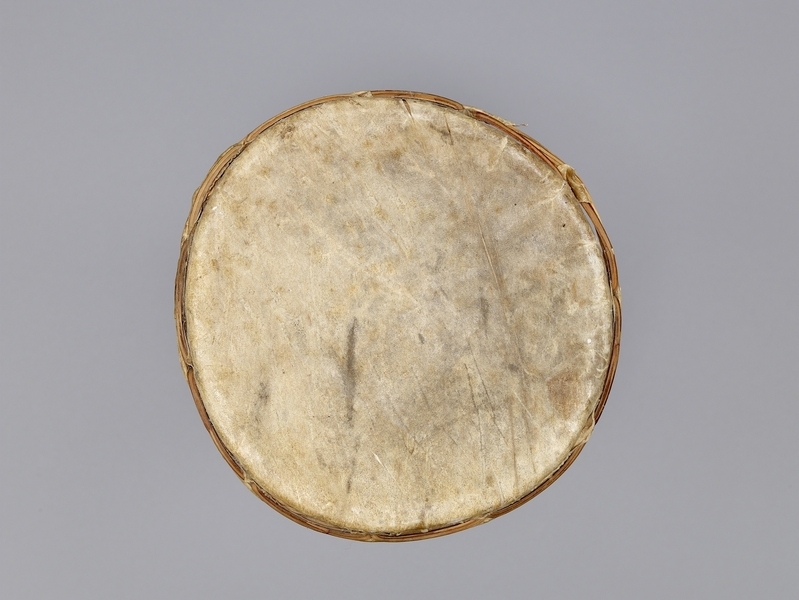Drum Item Number: 2704/42 from the MOA: University of British Columbia



Description
Tall, narrow drum with a skin top. The circular skin top is stretched down and tied with bark to a double woven band around the middle of the drum. Into the woven band are pushed nine carved stakes. The stakes are pointed and vary in length and shade. The drum is unpainted wood, broad at the top and tapers to the base. The interior is hollow.
History Of Use
Wedge and ring style or friction drum (uni membranophone) used by the Ekpe or Ngbe (Leopard) secret society. The society was said to have originated in the Old Calabar region in the seventeenth century, spreading to southeastern Cameroon, or the grass lands, by the nineteenth or twentieth centuries among the Bamileke peoples. The drums of the Leopard secret societies played a significant role in rituals and performances, as they represented the voice of the Ngbe. From the mid-eighteenth century, with heightened trade and the Trans-Atlantic slave trade occurring in the region, the ways of the Leopard secret society spread outside of the continent. The similar Abakua society was formed in Cuba around the late eighteenth to early nineteenth centuries. For the Abakua society, the drums guided the Ireme, an individual embodying, summoning or meditating with the spirit of ancestors. Today drums of this style are still used in performances in celebrations in various parts of the world, such as Panama and Suriname.
Item History
- Made in Nigeria
- Owned by Laurice Durham-Aldridge and Anthony Durham-Aldridge
- Owned by Carmel Magnusson and Terry Aldridge before March 19, 2008
- Received from Carmel Magnusson (Donor) and Terry Aldridge (Donor) on March 19, 2008
What
- Name
- Drum
- Identification Number
- 2704/42
- Type of Item
- drum
- Material
- wood, skin and bark fibre
- Overall
- height 60.0 cm, diameter 24.0 cm
Who
- Culture
- Efik
- Previous Owner
- Laurice Durham-Aldridge, Anthony Durham-Aldridge, Carmel Magnusson and Terry Aldridge
- Received from
- Carmel Magnusson (Donor) and Terry Aldridge (Donor)
Where
- Holding Institution
- MOA: University of British Columbia
- Made in
- Nigeria
When
- Ownership Date
- before March 19, 2008
- Acquisition Date
- on March 19, 2008
Other
- Condition
- good
- Current Location
- Case 98
- Accession Number
- 2704/0042